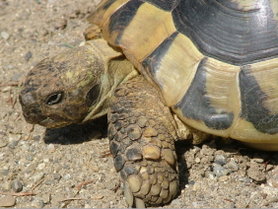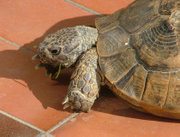 |
|
|
 |
 |  | Crabworks Reptile Water Dish for Crabs & Other Reptiles In Stock in Usa $5.99 |  |
 | Live Large Superworms With Free Shipping! For Pet Reptiles! $16.99 to |  |
 |
 |  | Super Mario Bros Reptile Hide Bundle for Leopard Geckos and Other Reptiles $65.00 |  |
 | Digital Reptile Thermometer/Hygrometer - For Lizards And Other Reptiles Alike $6.25 |  |
 |
 |  | Bb8 Droid Reptile Hide from Star Wars for Leopard Geckos and Other Reptiles $37.99 |  |
 | Zoo Med Kb-40 Repti Rock Corner Bowl, Large $41.31 |  |
 |
 |  | Silkworm Eggs 500 count (Best Price) $15.99 |  |
 | Live Banded Crickets - All Sizes 100 - 5,000 - Reptile Food $12.99 to |  |
 |
 |  | Alive Pet Reptile Feeder Insects & Bugs - Living Terrarium Pets Food Diet Feed $10.25 to |  |
 | Zoo Med Reptile Electrolyte Soak $9.89 to |  |
 |
 |  | Automatic Indoor And Outdoor Watering Device ( New Other) Reptile/Plant Watering $35.00 |  |
 | Tree Trunk Food/Water Dish for Amphibians, Reptiles and Other Brown(1 pcs) $27.06 |  |
 |
 |  | 500 - Large Live Superworms - Reptile Food $23.99 |  |
 | Exo Terra Reptile Cave - Natural Hiding Place - Medium (Pt2931) $14.99 |  |
 |
 |  | Live Giant Mealworms Pet Reptile & Bird Jumbo Meal Worm Big Living Food Feeders $12.29 to |  |
 | New Listingreptile supplies $25.00 |  |
 |
 |  | Live Superworms - 50 - 1,000 - Large 2"+ Reptile Feeders $10.99 to |  |
 | Extra Small Snake, Frog, Turtle, Gecko and other Reptile water / food dish 3d $5.99 |  |
 |
 |  | Captain America Shield From Marvel Mcu Dome for Leopard Geckos & Other Reptiles $39.99 |  |
 | Reptile Feeder Bugs: 50 - 1000 Medium Dubia Roaches w/ Free Shipping $9.99 to |  |
 |
 |  | Gecko Snake Underground Cave Reptile Tank Decor Enrichment Accessories Supplies $12.99 to |  |
 | Best Live Feeder Insects Superworms Mealworms Waxworms Hornworms Dubia Roaches $3.99 to |  |
 |
 |  | Dubia Roaches Small - Medium - Large Live Reptile Feeders 25 - 1000+ $11.99 to |  |
 | Terrarium Hood 24" High Lighting Solution Reptile Habitats Provides Essential $94.86 |  |
 |
 |  | White Python Plastic Black Water Bowl - Small - Snakes And Other Reptiles $13.44 |  |
 | Bearded Dragon Tank Accessories,Reptile Substrate for Terrarium,Reptile $12.52 |  |
 |
 |  | Removable Lid Hide for Geckos and Other Reptiles (Multiple Colors Available) $26.99 |  |
 | Removable Lid Corner Hide for Geckos & Other Reptiles (Multiple Colors) $26.99 |  |
 |
 |  | Bn-Link Reptile Heating Pad Temperature Under Tank Heater 6" X 8" adjustable $13.99 |  |
 | Lot of Reptile supplies $25.00 |  |
 |
 |  | Zoo Med Reptile Hammock Giant For Bearded Dragons & Other Large Lizards - 6 Pack $80.97 |  |
 | ReptiChip Reptile Substrate Coconut Chip Block for Snake and Lizard Bedding $34.95 |  |
 |
 |  | Zilla Reptile Health Supplies Vitamin Supplement Food Spray 8 oz. $12.99 |  |
 | Exo Terra Natural Terrarium - Advanced Reptile Habitat - Low -24In X 18In X 12In $209.99 |  |
 |
 |  | Live Superworms 50 - 1,000 Reptile Food Insects Free Shipping $10.98 to |  |
 | Live Crickets Pinhead Small Medium Reptile Food Free Shipping $10.00 to |  |
 |
 |  | Bn-Link Pet Heating Pad Mat for Turtles, Lizards, Frogs, and Other Reptiles $12.87 |  |
 | PawHut 60.5 Gallon Stackable Reptile Tank w/ Top Opening, Ventilation Holes $169.99 |  |
 |
 |  | Zoo Med Habba Hut For Reptiles, Amphibians , and other Small Animals Size: Small $3.49 |  |
 | Corner Hide for Leopard Geckos and Other Reptiles (Multiple Colors Available) $20.99 |  |
 |
 |  | Mushroom Hide for Leopard Geckos and Other Reptiles (Multiple Colors Available) $25.99 |  |
 | Custom Friends Show House Hide for Leopard Geckos and Other Reptiles $26.99 |  |
 |
 |  | Zoo Med ReptiSun 10.0 Uvb Mini Compact Fluorescent Reptile Lamp, 13-Watt $8.00 |  |
 | Flukers Heat Light, Hide, And Other Supplies for Reptiles $20.00 |  |
 |
 |  | Kirby for Leopard Geckos and Other Reptiles $39.99 |  |
 | Zoo Med Floating Turtle Log $64.99 |  |
 |
 |  | Two Level Hide for Leopard Geckos and Other Reptiles (Multiple Colors Available) $37.99 |  |
 | Jungle Reptile Vine For Terrarium Reptile Decor Plants Xyzreptiles $6.99 |  |
 |
 |  | Betazooer Turtle Tank with Adjustable Water Small, Acrylic 15.7"×11.8"×10" $52.44 |  |
 | Repti Calcium with D3 Reptile Supplement $8.23 |  |
 |
 |  | Thrive All Reptiles Essential Basking Spot Uva Light for Reptiles Free Shipping $12.00 |  |
 | Cowboy Costume Ideal For Bearded Dragons Or Other Reptiles $14.99 |  |
 |
 |  | Water and Food Bowls for Reptiles, Amphibians and other Animals $13.00 to |  |
 | 1000 Live Large Superworms - Reptile Food $34.99 |  |
 |
 |  | White Python Plastic Black Water Bowl - Medium - Snakes And Other Reptiles $14.57 |  |
 | 1000 - Live Mealworms - Reptile Food $15.99 |  |
 |
 |  | Zilla (#100111305) Jungle Mix Reptile Bedding, Sphagnum moss/Fir shavings, 24qt $28.77 |  |
 | Zilla Reptile Pet Terrarium Fresh Air Screen Cover 36" x 18" New $19.99 |  |
 |
 |  | Zoo Med As-C5 Avian Sun 5.0 Compact, 26 Watt, White $54.19 |  |
 | 3 Way Hide for Leopard Geckos and Other Reptiles (Multiple Colors Available) $23.99 |  |
 |
 |  | Amber Naturalz Reptaid & Reptaid Xl Organic Reptile Immune Support 1oz $26.97 to |  |
 | Fake Rock. Home For Fish, Small Reptile Or Other Small Pets, Used Very Good $7.95 |  |
 |
 |  | Amber Naturalz Organic Reptaid Reptile Immune System Health Support $26.97 |  |
 | Zoo Med Natural Terrarium Repti Lock Reptile Child Safe Combo Naturalistic $9.99 |  |
 |
 |  | Pipe Reptile Hide from Super Mario Bros. for Leopard Geckos and Other Reptiles $26.99 |  |
 | Live Mealworms - Grown Organic Meal Worms for Reptiles - 250 Bulk Feeder Insects $10.99 |  |
 |
 |  | Crested Gecko Hut Hide Out Cave 'The Dragon Egg' Cocunut Reptile Lizard $31.91 |  |
 | Reptile Hide Box D- Large for Snakes Geckos Lizards and Other Reptiles $26.13 |  |
 |
 |  | Zoo Med ReptiSafe Instant Terrarium Water Conditioner 4.25 oz for Reptile Bowls $10.61 |  |
 | Reptile Bearded Dragon Feeder Wall-Mounted Insect Feeder for Chameleon Lizard $17.09 |  |
 |
 |  | Tortoise Iguana Reptile Food Diet Fresh from bulk Choose Size! $9.99 to |  |
 | Live Mealworms - 50 - 3,000 - Reptile Food Feeders Free Shipping $8.50 to |  |
 |
 |  | Reptile Feeder Bugs: 75 - 1000 Extra Small Dubia Roaches w/ Free Shipping $9.99 to |  |
 | Live Superworms - 50 - 1,000- Large 2" - Reptile Food $10.99 to |  |
 |
 |  | Reptile Plants Artificial Terrarium Plants Reptile Plastic Plants for Reptile Ha $17.09 |  |
 | Live Giant Mealworm Bearded Dragon Feeders -Reptile Meal Worm Lizard Food $3.99 to |  |
 |
 |  | Hercocci Lizard, Spider, Snake, Chameleon or Other Reptile Habitat Kit, Nwt $15.00 |  |
 | 5-1Pcs Uvb Tester Reptile Uva Uvb Fluorescent Lamp Tester Card Reptile Lamp Uv S $6.61 to |  |
 |
 |  | ReptiEarth Reptile Bedding Fluffy Fine Coconut Fiber Substrate for Terrariums $17.95 to |  |
 | Bn-Link Heating Pad Mat for Turtles, Lizards, Frogs, and Other Reptiles 8*12inch $15.99 |  |
 |
 |  | Lot of Reptile supplies - Exoterra light, artificial vines/plants, cork pieces $23.93 |  |
 | R2D2 & Bb8 Bundle Reptile Hides Star Wars for Leopard Geckos and Other Reptiles $65.00 |  |
 |
 |  | Fluker's Bamboo Bars for Reptile enclosures $27.07 |  |
 | Live Silkworms- Small 50 count. Feed your reptiles the best! Free Shipping! $26.00 |  |
 |
 |  | Live Darkling Mealworm Beetles Feeders Free Shipping Reptile Food $16.50 to |  |
 | Ipower Reptile Heat Pad 8X12 Inch 16W under Tank Terrarium Warmer Heating Mat fo $15.13 |  |
 |
 |  | Rectangular Hide Box for Reptiles & Snakes - Durable Plastic - by Jungle Bob $6.99 to |  |
 | 10.0 uva uvb compact reptile bulb. Bearded dragon, other basking reptiles $16.10 |  |
 |
 |  | L Shaped Hide for Leopard Geckos and Other Reptiles (Multiple Colors Available) $23.99 |  |
 | Zoo Med Reptile Hammock Giant Ideal For Bearded Dragons & Other Large Lizards $18.08 |  |
 |
 |  | Large Reptile Hide Bearded Dragon Crested Gecko Reptile Lizard Snake ball pyt. $15.00 |  |
 | ReptiChip Reptile Bedding Coconut Chip Substrate for Terrariums $19.95 to |  |
 |
 |  | Dubia Roaches Small,Medium,Large Reptile Feeders Live Feeders Free Shipping $8.99 to |  |
 | Mistking Adjustable Rain Nozzle for Chameleons, Geckos And Other Dew Lappers $49.70 |  |
 |
 |  | Live Crickets Pet Reptile Feeders - Bearded Dragon Lizard Living Bugs Food Diet $12.99 to |  |
 | Live Mealworms - 50 - 10,000 - Large 3/4" - 1" - Reptile Food $8.99 to |  |
 |
 |  | Live Superworms - 50 to 1,000 - Reptile Feeders from BuyFeederCrickets $11.99 to |  |
 | Adjustable Bearded Dragon Harness and Leash Lead Set for Reptile Lizard Supplies $9.06 |  |
 |
| Click to see more Other Reptile Supplies items at www.ebay.com
Prices current as of last update, 12/15/24 10:27am.
|
|
|


